Fellowship stories
Spitfire Memorial Defence Fellowship
Spitfire Memorial Defence Fellowship
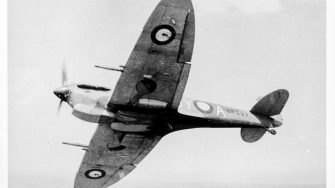
Read stories from fellows of the UNSW Canberra Spitfire Memorial Defence Fellowship.

Field: Engineering and hypersonics
Project title: Thermal energy deposition on hypersonically stressed structures for counter hypersonic applications.
The broad area of hypersonics is of significant interest to Australia’s Defence capability. Within this, the area of counter hypersonics is of particular importance. As traditional kinetically based defense options become unsuitable against high-speed threats, we need to pivot our strength in hypersonic research to the field of counter hypersonics. This project proposed to perform fundamental experimental research on how thermal energy deposition could be used to neutralise a hypersonic threat.
Using technology developed at UNSW Canberra, this project thermally stresses ceramic models analogous to hypersonic vehicle panels. The effect of thermal deposition is replicated while this stressed panel is experiencing hypersonic flow conditions. The outcome of this study will be the development of a robust experimental methodology, validation of in-house thermal energy deposition numerical codes and improved fundamental understanding of how hypersonically stressed vehicle panels respond to energy deposition.
Dr Capra has demonstrated sustained academic achievement and experience in the field of highspeed flight, with a strong focus on the aerothermodynamics of hypersonic vehicles. She also has industry experience outside of academia which she brings to my her academic role. In addition to her research activities, she is actively involved in technical societies (AFMS, ISABE, RAeS) and STEM outreach programs such as Young Women in Engineering (YoWIE), Cool Aeronautics and Women in Aviation.
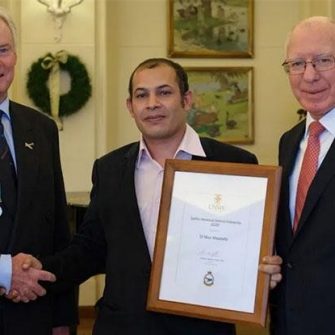
Field: Cyber Security and AI
Project Title: A New Cyber Threat Intelligence System using Artificial Intelligence in the Internet of Things Networks
Dr Nour Moustafa is a Lecturer in Cyber Security and the Coordinator of the Postgraduate Cyber Program at the School of Engineering and Information Technology (SEIT), University of New South Wales, Canberra.
His areas of research and teaching focus on Network Security, Intrusion Detection/Prevention, Threat Intelligence, Statistics and Machine Learning, Internet of Things healthcare systems, Industrial Internet of Things (IIoT) and Cloud and Fog paradigms. He has achieved an impressive academic record in the fields of Cyber Security and Artificial Intelligence nationally and globally. Dr Moustafa won several grants between 2018 – 2019 totalling of more than $600,000. He is the chief investigator of two current grants for developing a threat evaluation tool for protecting Australian Smart Airports and generating datasets for evaluating the fidelity of intelligent cyber applications. Dr Moustafa supervises postdoctoral researchers, casual academics and jointly supervises three PhD students.
He has published about 36 research outputs in top-tier conferences and journals between 2015 and 2019. His research has been widely used in academic and industrial institutions. Dr Moustafa has also won two innovative ideas awards from CSIRO and United States Army's International Technology Center. He has opened a new theme, so-called "Intelligent Security" that has been published at the UNSW Value of Trust and Defence capability in 2019. This theme focuses on studying intelligent security methods for developing cyber threat intelligence and detection models that are entirely aligned with his SMDF Fellowship. His external research partners include the Australian Federal Police, Information Warfare Department, Oracle, CSIRO and Cyber Security CRC.
As the Internet of Things (IoT) networks comprise heterogeneous physical and communications devices and services, discovering unknown vulnerabilities and their hacking vectors is an arduous and risk-prone process. Solving the challenge of IoT vulnerabilities depends on methods of penetration testing, which require system administrators to attempt multiple and often bespoke commercial tools for testing vulnerable network nodes, platforms, and software.
Dr Moustafa's Fellowship will enable him, working with others, to develop a new cyber threat intelligence system, which could automate the process of identifying vulnerabilities and their hacking scenarios in IoT networks, for generating automatic patches to those vulnerabilities. The proposed system will automatically discover network weaknesses and their attacks across IoT networks using new variants of Artificial Intelligence (AI) planning and deep learning algorithms. The goal of the fellowship is to develop new cyber threat intelligent system-based AI for estimating the vulnerability and hacking behaviours in terms of posterior probabilities, vulnerability paths, exploitation paths and automatic correlations of these paths.
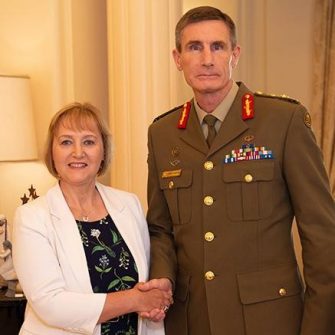
Field: Cyber Security
Project Title: A Cyber-Physical Approach to Improve Mission Assurance for Remotely-Operated Aerial Systems and Aircraft Payloads
The modern networked Royal Australian Air Force (RAAF) operates multiple complex mission-critical systems including legacy systems interconnected by multi-dimensional communication systems. This complex integrated and networked system-of-systems must operate in an environment with diverse, growing and evolving cyber threats. Understanding designs for improving the resilience of Air Force networked systems to cyber-attacks is essential for the new generation Air Force to meet the mission to “fly, fight and win - in air, space and cyberspace”.
The increasing prevalence of Unmanned Aerial Vehicles (UAVs) in the military and civilian sectors, has been accompanied by an increase in sophisticated malicious activities. This project suggests a new resilient cyber-physical UAV Distributed Anomaly Detection (UAV-DAD) framework for detecting intrusive activities of UAVs, using the principle of anomaly-based detection to effectively recognise both existing and unknown attacks. Research outcomes to be shared with the RAAF will further the collaborative research and the proposed framework. The collaboration will promote greater awareness of cyber security in autonomous operations and related confidentiality-integrity-availability (CIA-triad) issues across the Australian Defence Force while providing guidance on how, through anomaly detection, to identify malicious attacks in ways that will make mission-critical systems resilient to cyber-attacks.
Dr Sitnikova is an internationally recognised leader in Critical Infrastructure Protection research, with particular expertise in complex systems and networks, the key areas of cyber-physical systems security and the Industrial Internet of Things (IIoT). Dr Sitnikova combines her expert knowledge and experience in cyber security, signals, control systems, systems and software engineering, with a sophisticated approach to quality assurance, and a highly developed understanding of cyber security educational strategies.
Dr Sitnikova has worked extensively in the IT industry and academia, in Australia and overseas, and has established an international research reputation in critical infrastructure cyber security. In recognition of her expert capabilities, as well as her position at UNSW Canberra at the Australian Defence Force Academy, she also holds the position of Adjunct Associate Professor in Electrical and Computer Engineering at the University of Alabama in Huntsville (UAH). As a UNSW PLuS Alliance Fellow she is expanding her research and education collaborations internationally with Arizona State University (USA) and King’s College London (UK).
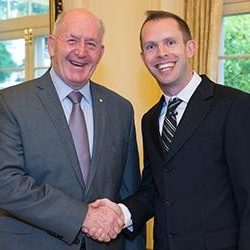
Field: Social Sciences
Project Title: Military Officer Attitudes Toward the Adoption of UAVs
The days of manned flight are numbered. Unmanned autonomous aerial vehicles already supplement Australian Defence Force pilots in ‘dull, dirty and dangerous’ roles and the Joint Strike Fighter could represent Australia’s last major purchase of a manned aircraft platform.
But as Elting Morison (1966) has pointed out, transitions from one type of military approach to another approach or system to very different approaches or technologies will have a major impact on individuals involved and also influence the service’s broader value set and professional judgments. Innovative systems and technologies will, after all, often involve the employment of different tactical skills and operational/strategic concepts, as well as have an impact on command authority, hierarchical relations and the effective military control of people, systems and resources, promotional paths and training. It is highly likely that some or all of these impacts will be felt with the introduction of increasingly autonomous aerial vehicles in Australia.
Dr. Jai Galliott is therefore launching a study to probe the attitudes of Australia’s most junior officers, the Officer Cadets and Midshipman of the Australian Defence Force Academy, toward the issues associated with the development and deployment of autonomous systems technologies. It is this mass of officer practitioners, the future of the Australian Defence Force, who will be required to adopt, interact with and supervise the operation of new weapons systems once fielded. Understanding their views will help build an understanding of how autonomous technologies can be better designed, developed and engineered to account for the negative consequences that come from disruption of the processes that govern the warfighter’s interaction with autonomous systems.
At the outset, however, it must be acknowledged that efforts to build better systems and improve tolerance of robots and automation are constrained by the fact that modern technology is a unified and holistic system in which all parts are dependent on one another, like cogs in a mechanical machine. You cannot simply get rid of the ‘bad’ or autonomy-limiting parts of technology and retain only the ‘good’ or desirable parts. You have to build the relevant systems to be sensitive to the desirable outcomes and values from the design stage and that is exactly what this project aids to drive: value-sensitive design.
Dr. Galliott is a world expert on the socio-technical implications of emerging military technologies in the School of Engineering and Information Technology at the University of New South Wales at the Australian Defence Force Academy and is Australia’s foremost expert on the socio-technical implications of autonomous systems. He is also Visiting Fellow at the University of Oxford and Non-Resident Fellow at Modern War Institute at the United States Military Academy, West Point.
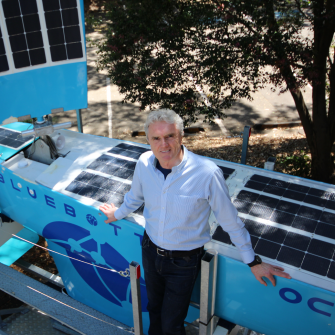
Field: Environment
Project title: Development of unmanned military vehicles
In 2017, Robert Dane was awarded the 2017 Spitfire Memorial Defence Association Fellowship. Robert is Intel Environment Laureate and a WWF Future Maker recipient and was recently honoured to be a finalist for the International Windship Awards Lifetime Achievement Award
In 1996, Robert, a passionate sailor and environmentalist, invented and patented the 'solarsail' and designed the first 'solarsailor' prototype. In 1997, Solar Sailor won the Advanced Technology Boat Race in Canberra, beating the next solar boat by 5 laps of 6km (30km) using a new patented 'solar sail' - a simple device which harnesses both solar and wind energy in a seaworthy manner. The first commercial 'solarsailor' ferry won the Australian Design Award of the Year in 2001.
Ocius Technology Ltd (formerly Solar Sailor Holdings Ltd), of which Robert is founder and CEO, is an Australian public unlisted company with Research and Development facilities at the University of NSW. The company has proven a solid track record of conceiving, funding, and delivering difficult, innovative, high-tech, award-winning projects on time and on budget.
The company has built multiple 'solarsailor' prototypes and six high-tech, award winning, hybrid electric, commercial passenger ferries to international classification requirements, which together have carried tens of thousands of passengers.
Following an enquiry from the USA in 2007 for a 'platform that could go to sea forever', the company began research into the development of unmanned solar/wind/wave powered ocean vessels or autonomous unmanned surface vessels. Initially, a 20-foot manned engineering development model (EDM) proved the 'speed of advance' in all conditions, adequate power, payload and persistence for a sustainable platform go to sea for months.
Ocius built multiple scale models for tank and lake testing, culminating in the building of the first 10' prototype called 'Nemo' (Latin for 'no one' ie unmanned) which provided significant proof of concept of a solar, wind and wave powered USV carrying a significant payload.
Based on Nemo's development, in 2015, Ocius was awarded a Capability Technology Demonstrator (CTD) from Defence Science and Technology Group. This proved a significant contract and Ocius with our partner Thales developed an 18' prototype 'Bruce' for Antisubmarine Warfare (ASW), which was demonstrated to the NAVY in August 2017.
In Sept 2018, Ocius was awarded its second defence contract under the Defence Innovation Hub to build an intelligent “Command and Control (C2) network” of intelligent persistent unmanned surface vessels.
In November 2019 'Bruce' participated Autonomous Warrior War games in Jervis Bay. Due to extreme weather, 'Bruce' was often the only USV operating. Ocius' intelligent C2 system was used to control another Navy WAMV catamaran and 2 DSTG UUVs.
From May - June 2019, Ocius completed 6 week endurance and intelligent networking trials in a designated AMSA approved 'box' off the NSW Coast,
Ocius is continuing its work into the development of commercial craft as well as unmanned surface craft. Robert recently expressed his gratitude 'to the Spitfire Association, its President, Geoff Zuber, and Committee for their support, particularly Lysle Roberts, who was a great inspiration to us and the students who worked on the project at UNSW'.
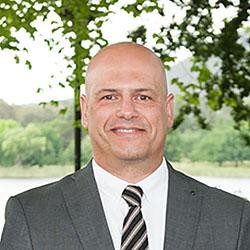
Field: Physiology
Project Title: Simulated military dehydration and its relationship to contextual interference and cerebral oxygenation
It has long been believed that one of the major ingredients in the recipe for success in battle, particularly in hot climates, is water. If military personnel can avoid the mental and physical degradation brought on by dehydration, popular wisdom tells us, then they will have an advantage. The US military says an individual’s sense of thirst should not be the reason to hydrate - instead responsible commanders should ensure their personnel consume the recommended amount of fluids (up to 1.8 litres per hour) before becoming thirsty.
But what if heat stroke and other issues affecting physical and cognitive performance are not as related to dehydration as we think? What if the human body’s resilience in terms of reaction to environmental pressures is greater than we give it credit for? Research literature around the topic of dehydration is unclear, despite the overwhelming popular consensus that a lack of hydration leads to a lack of performance. Extensive searches of literature reveal no published reports that provide evidence to say dehydration alone has caused or led to a fatality. But over-hydration has led to more deaths than you would think.
If we’re wrong around military battlefield hydration policies and if thirst alone is an acceptable guide for an individual to know when they need to hydrate, then it is possible that entire military forces are suffering deleterious consequences of over-hydration, says Professor Frank Marino from Charles Sturt University. His own studies, as well as several others, have so far revealed that dehydration to 4% of body mass has no effect on performance. Other research has shown the fastest runners in the field are those who dehydrated the most (8 to 10% of body mass).
Professor Marino, currently the Foundation Head, School of Human Movement Studies and Chair of Physiology at Charles Sturt University, is launching a study into whether dehydration is of physical or cognitive consequence to military personnel in the field. The results of his work could have a powerful impact on current policies around hydration of military personnel.
An academic with a formidable track record, Professor Marino has held the position of Visiting Professor at Harvard University, developed the novel physiological paradigm of ‘anticipatory regulation’, has won two Vice Chancellor’s Awards for Research Excellence and is ranked in the institutional top five researchers for output.
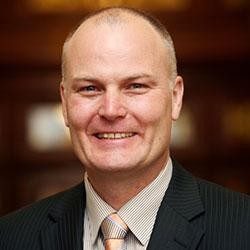
Field: Artificial Intelligence/UAVs
Project Title: Sensing and guidance for micro air vehicle flight in cluttered environments
Small, autonomous drones known as micro air vehicles (MAVs) have the potential to greatly enhance situational awareness for soldiers in combat operations, and are coveted by military and security organisations for the portability and stealth. Given their relatively small size – around 15 cm wide – they can be easily transported in a backpack, rapidly hand launched, and can provide close-proximity surveillance, covertly sniffing out threats that are just around the corner, says Associate Professor Matthew Garratt from UNSW Canberra’s School of Engineering and Information Technology. These small drones have enormous potential in combat, to detect bombs and chemical weapons, in peacekeeping and policing missions, and for search and rescue following disasters. To be effective, however, they need to be able to autonomously navigate through busy environments, littered with obstacles. Garratt, who leads the Autonomous Systems Group at UNSW Canberra, received the 2014 Spitfire Memorial Defence Fellowship to develop an advanced guidance system to help MAVs more effectively navigate through cluttered environments, including urban conflict zones, forests, and the inside of buildings. The system, which uses a low-cost time-of-flight camera coupled with a small 3D ranging sensor, and incorporates new algorithms and hardware, will improve the "vision" of MAVs so they can take-off and land vertically, and autonomously hover and fly, ultimately exploring complex environments. A 10-year veteran of the Royal Australian Navy, Garratt has worked at UNSW Canberra since 2001, and previously demonstrated a technology for landing an unmanned helicopter onto the rocking deck of a naval ship.
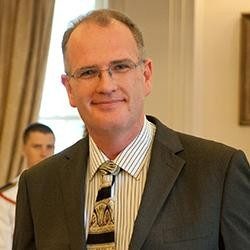
Field: Hypersonic Flight
Project Title: Pulsed nanosecond-duration discharge for reduction of ignition delay
The ADF is interested in developing missiles and aircraft that can travel faster than sound, covering intercontinental distances in mere hours. Globally, there has been a race to develop a hypersonic scramjet. These air-breathing engines, which could theoretically reach speeds beyond 14,000 km/hour, have a deceptively simple pipe-like design requiring no moving parts. Air enters through an inlet at the front, and through sheer speed is compressed and heated. The air is then burned with a propellant fuel in a combustion chamber, and the hot exhaust is accelerated through a nozzle at the rear to generate thrust. These incredibly fast speeds, however, create a problem for engineers known as ignition delay: the airflow through the engine is faster than the combustion reaction speed, says Dr Sean O’Byrne, an aerospace engineer at UNSW Canberra. An expert in laser-based sensors and hypersonic airflow, O’Byrne is investigating a new technology that uses repetitively pulsed, short-duration high-voltage discharges inside the engine to reduce this delay. “By having these pulses only a few billionths of a second long, they can chemically excite the flow to make it more reactive,” says O’Byrne. The 2013 Spitfire Memorial Defence Fellowship helped O’Byrne and his research team develop this technology, which is capable of generating 15,000 volt bursts approximately 10,000 times per second, and a new technique to precisely measure the airflow temperature during and after each nanosecond discharge. O’Byrne, who spent a year working at NASA investigating interplanetary travel, was a chief investigator on the Australian Government’s $15 million SCRAMSPACE project. His work will contribute to the development of next-generation hypersonic aircrafts.
“There is no fellowship like this one in Australia. It’s a great way of developing new ideas that would possibly not see the light of day…this fellowship allows such potentially high-payoff ideas to be tested in a small-scale way.”

Field: Structural engineering
Project Title: Development of engineered cementitious composites for defence
Robust building materials that can survive blasts from high-velocity projectiles and gunfire are critical to keeping ADF personnel and equipment safe from enemy attacks. Dr Yixia Zhang, a structural engineer at UNSW Canberra, has been investigating new, hybrid materials that can be used to build protective structures in warzones. Cement-based materials like concrete have been widely used in manmade construction for centuries. Beginning in the 19th century, reinforcing steel was added to improve its impact resistance – but this addition also meant walls needed to be super thick, requiring lots of materials. As Zhang explains, concrete still has inherent weaknesses: it’s a brittle material, prone to extensive cracking, and can ultimately fail or break apart if slammed by a high force or impact. Zhang is interested in a new, hybrid material called engineered cementitious composite (ECC). These mortar-based materials incorporate polymer fibres for reinforcement and can absorb higher impacts than concrete, deforming like metal rather than fracturing like glass. With funding from the Spitfire Memorial Defence Fellowship, Zhang has been testing ECC panels under low-speed “drop weight” impacts and ballistic high-velocity impacts using live ammunition from military-grade weapons, and comparing the performance against a range of other reinforced concrete panels. Zhang says the successful tests have “demonstrated the excellent impact resistant capability” of the ECC and provide some of the first real-world evidence of how these materials stand up against gun and rocket fire. Zhang, who has presented her findings at two international conferences, is now working on further improving the integrity of these materials. Her research could provide useful guidelines for the design and construction of safer protective structures in combat zones, which require significantly less construction materials.
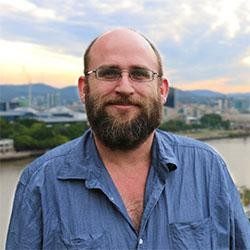
Field: Artificial Intelligence/UAVs
Project Title: Developing collision warning and avoidance systems for small and medium UAVs
Keeping UAVs safe from collisions is an important consideration for modern militaries that have invested billions of dollars to build their fleets. Back in 2011, weight and power supply issues meant conventional on-board collision detection systems, usually involving radars, were unfeasible for small- to medium-sized UAVs. Dr Jason Ford, an electrical engineer and robotics researcher at the Queensland University of Technology, has been developing vision-based approaches for detecting obstacles, generating early warnings, and enabling collision avoidance. Funding from the Spitfire Memorial Defence Fellowship enabled early versions of his system – which uses a combination of shortwave infrared sensors, near infrared sensors, and advanced image processing technology – to be flight tested in mid-air collision scenarios between Flamingo and Boomerang UAVs, and on near-collision flights between two piloted Cessna aircraft. One of the big challenges was differentiating between physical objects that posed real collision risks to the UAV, and other image artefacts in the sky, such as cloud edges, which were completely harmless.
Dr Ford’s research on collision warning technologies for small to medium sized fixed-wing UAV systems has continued since the end of his Spitfire project. Since 2012, his efforts have focused on miniaturising the technology and adding additional capabilities. In late 2013, a prototype version of his collision warning technology was successfully demonstrated on a ScanEagle UAV achieving high reliability detection of potential mid-air collisions. In 2015, more flight experiments were conducted to enhance the technology.
Ford, who completed his PhD at the Australian National University, joined the Australian Defence Science and Technology Organisation as a Research Scientist in 1998. Ford worked at UNSW Canberra as a research fellow in 2004 and in 2005 joined Queensland University of Technology where he is currently a Senior Lecturer.
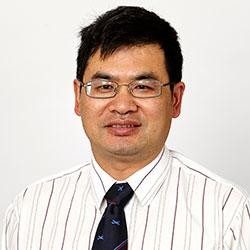
Field: Biomechanics
Project Title: Improved helmet design to reduce traumatic brain injury from improvised explosive devices
The wars in Iraq and Afghanistan over the last 15 years have revealed the horrific consequences of improvised explosive devices (IED). These unconventional bombs are commonly deployed by terrorists and insurgents in asymmetric war zones, often as roadside attacks against vehicle convoys. In the second Iraq War, IEDs were used extensively against US-led forces, and by the end of 2007 were responsible for more than 60 per cent of coalition deaths. In Afghanistan – a conflict where Australia has suffered 41 fatalities – it’s estimated that IEDs have caused 66 per cent of coalition casualties. Soldiers who are lucky to survive the blasts are often left with traumatic brain injuries, caused by direct impacts, and also by blast waves, which can rapidly change atmospheric pressure. Dr Wenyi Yan, a mechanical and aerospace engineer at Monash University, is investigating the complex nature of these brain injuries, with the ultimate aim of developing more sophisticated helmets for soldiers in combat. Yan, an expert in the mechanical behaviours of advanced materials, including how they fracture under stress and degrade over time, is the first Chinese-born recipient of the Spitfire Memorial Defence Fellowship. He used his fellowship to purchase a powerful computer and software to begin building numerical models of the human head, and to simulate the effects of IED blasts, in order to conduct biomechanical research into how these brain injuries occur. Yan, who has taught in China, Europe and the UK, has been teaching in Australia since 2000.
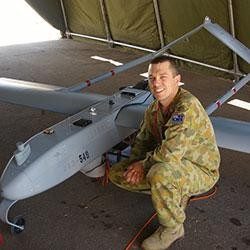
Field: Defence technology/UAVs
Project Title: Improving the capability and support of UAVs
Today, UAVs are a ubiquitous part of modern warfare, used for reconnaissance and surveillance. Back in 2009, with the Australian Army building up its fleet of these versatile machines, it sought to acquire a tactical UAV. Major Keirin Joyce, a logistics and aerospace engineer with the Army, was posted to the Defence Materiel Organisation (DMO) to help with this task, and to prepare future acquisition strategies for drones. As part of his recently completed Masters of Science in Aerospace Engineering at UNSW Canberra, Joyce studied the introduction into service (IIS) of the Army’s existing UAVs, as well as a range of international IIS reports. Anecdotal evidence and data from these reports about the performance of different UAVs was used to inform the Army and DMO’s strategy. Joyce, who had concurrently begun a four-year doctorate program in modelling UAV logistic support, was awarded the Spitfire Memorial Defence Fellowship. The money from the fellowship enabled him to attend important conferences in the UK and the US, where he met with researchers from NASA, the US Air Force and Army, as well as UAV capability managers in the Pentagon. Prior to his work on drone acquisitions, Joyce was the engineering officer at the 20th Surveillance and Target Acquisition Regiment. In this role he was deployed to both Iraq and Afghanistan, and was part of a team developing tactical UAV capabilities in combat. Joyce, a near 20-year veteran of the Army, was recently awarded the Chief of Army Scholarship to continue his PhD research. Joyce has since been consulted by both Air Force and Navy in the development and support of their own emerging UAV capabilities.
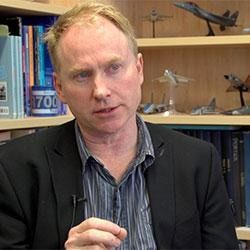
Field: Aircraft/engine design
Project Title: Fluidic thrust vectoring and its application to future air combat
Aircraft manoeuvrability could be the difference between life and death for pilots and crew in combat. One way to improve manoeuvrability, as well as take-off and landing performance, is through mechanical thrust vectoring, which is achieved by manipulating the direction of the exhaust from the engine’s nozzles. This, in turn, can be used to control the aircraft’s orientation. In combat, mechanical thrust vectoring is considered particularly useful because it can enable post-stall controlled flight, allowing pilots to make rapid direction changes. Associate Professor Andrew Neely from the School of Engineering and Information Technology at UNSW Canberra has been trying to make these systems more feasible for the RAAF. While commercial transport aircraft have long used reverse thrust to reduce landing distances, similar systems are considered too costly and heavy for high-speed military aircraft. For example, when one of the world’s premier fighter jets was introduced – the Lockheed Martin F-22 Raptor – the thrust vectoring exhaust nozzle accounted for a staggering 30 per cent of total engine weight. Neely, an aerospace engineer was the recipient of the Spitfire Memorial Defence Fellowship in 2008 for a project investigating fluidic thrust vectoring (FTV). Instead of incorporating secondary nozzles to divert thrust, FTV systems alter its direction via suction or by injecting a secondary flow. In addition to improving aircraft stealth, these lighter, more affordable systems could also reduce the aircraft’s overall weight, possibly eliminating the need for fins and control surfaces. Since receiving the Fellowship, Neely has secured further funding from engineering firm BAE Systems and the Department of Defence to continue this research.
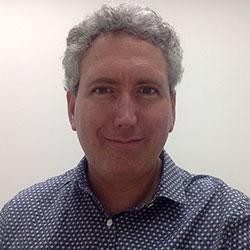
Field: Artificial Intelligence/Missile Defence
Project Title: Blue Mongoose – advanced air defence software
As militaries and terrorist organisations around the globe acquire new long-range missiles, developing adequate defence systems could prove vital to regional and national security. Dr Nigel Greenwood has spent nearly two decades developing and refining a technology that could bolster a future missile defence shield for Australia. Greenwood, who has a PhD in mathematics from the University of Queensland and is a former Honorary Senior Fellow in the School of Mathematics and Physics there, is an expert in differential game theory, which relates to the modelling and analysis of strategy in conflict.
Drawing on this research he has developed a maths-based machine-intelligent identification, guidance and control system, which can be implemented in unmanned aerial vehicles (UAVs) and anti-missile missiles. This system – known as Blue Mongoose – enables improved capabilities to protect against sea-skimming cruise missiles. Unlike conventional platforms, the Blue Mongoose software enables the algorithms and dynamics of hostile bank-to-turn missiles to be reconstructed from noise-polluted partial information and helps resolve ambiguities, enabling subsequent higher-confidence countermeasures, including interception, to be applied.
In 2015 an international patent application was lodged on the underlying mathematical technology. Also in 2015, one of the world’s top three manufacturers of aviation engines assessed the technology and is funding a pilot project to demonstrate its use in reconstructing complex aviation engine dynamics.
Greenwood was a two-time recipient of the Spitfire Memorial Defence Fellowship, receiving the award in 2005 and 2007.
“…contributions are extremely important. They enable valuable IP to be developed by Australian scientists, and at the end of each SMDF project there are Fellows who look for partners to help take this IP further.”
“This is an extremely important Fellowship that makes a unique contribution to defence-related R&D in Australia.”
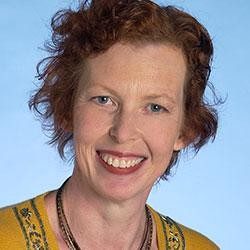
Field: Business
Project Title: Accounting for the business of defence
Protecting our national interests and keeping Australians safe is a costly endeavour. The Commonwealth Government’s 2015 Budget set aside $31.9 billion for Defence in the 2015/2016 financial year, and a total of $132.6 billion out to 2018/2019. Given the stakes, it’s important to make sure that the money is being well spent, and these expenditures are being effectively reported to the government and wider population. Dr Frances Miley, a senior lecturer in the UNSW Canberra School of Business, understands how important money management is to the successful operations of the Australian Defence Force (ADF): “It may not be the most exciting area when compared with the technical developments in defence, but sound financial management is critical to ensure that Australia, and the nations whose defence forces it supports on deployment, are efficiently and effectively equipped,” she says. In 2003, with help from the Spitfire Memorial Defence Fellowship, she was able to conduct a comprehensive review of the financial management of the Australian, New Zealand, and Canadian defence forces. Through this work, she was able to make a number of recommendations to improve the financial management of the ADF and its allies, many of which have been adopted. Miley lectures in law, accounting, risk management and finance, and says it’s important to teach these subjects to ADF officer cadets and midshipmen commencing their studies at UNSW Canberra: “This is critical, as officers these days are also required to be resource managers as they gain seniority.”
“I am very grateful to the Spitfire Association for their assistance with this work… My project was very well received. It led to discussions in the Defence Forces in the three countries I compared and to improvements in the financial management practices of two of those countries.”
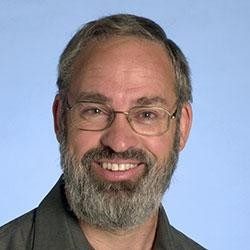
Field: Advanced weapons
Project Title: An investigation of thermal masking in infra-red homing missiles
Success in modern military operations means fast-moving weapons, but also zeroing in on - and striking - targets with precision accuracy. Many guided weapons, particularly air-to-air missiles used by the RAAF, use infra-red homing devices to locate specific targets. These homing devices aren’t fail-safe: the increasing speed of modern missiles means that compression heating of the air that flows over the projectile as it travels results in high temperatures at the missile’s nose. These high temperatures, created by airflows with velocities faster than sound, or about 1300 km per hour, effectively mask the infra-red sensor, and cause the ballistic to go off-course. This is problematic given the cost of weapons and the importance of hitting targets. Dr John Milthorpe, an aerospace engineer from UNSW Canberra, was awarded the Spitfire Memorial Defence Fellowship in 2002 to try to investigate this “masking” effect and improve missile accuracy. Along with colleagues at UNSW Canberra and the Australian National University, which is home to a suite of free piston shock tunnels, Milthorpe used computational fluid dynamics to predict the changing temperature of the air around the travelling missile from all visible directions. This modelling work allowed the researchers to estimate the extent of the masking, the angles at which it might occur, and the types of targets most likely to be obscured. Through this work, the team hoped to provide a broader understanding of the missile speeds that might be achieved in future without compromising accuracy. Milthorpe is still affiliated with UNSW Canberra as a visiting Senior Lecturer with SEIT.

Field: Aircraft design
Project Title: Jet fighter design evolution - Korean War to present
To design the best possible fighter jets for our future air force, it’s important to chart the evolution of these powerful aircraft in response to the changing operational dynamics of modern conflicts. An aeronautical engineer and senior lecturer at UNSW Canberra for more than 20 years, Dr Rikard Heslehurst is an expert in aircraft design, as well as advanced, light-weight composite materials and structures. In 2001, he began working on a technological-based history of the jet fighter aircraft, looking specifically at its design evolution since the Korean War (1950-1953) – the first conflict that saw instances of jet-to-jet combat. The objective of this project was to help develop the requirements for the next-generation of RAAF fighter jets, once the active planes at the time – the F-111 and F/A-18 – were retired from service. It was for this history project that Heslehurst was jointly awarded the inaugural Spitfire Memorial Defence Fellowship. Through in-depth technical analysis, he assessed how major conflicts around the globe over the latter half of the 20th century – including the Vietnam, Gulf and Bosnian Wars – influenced the design of jet fighter aircraft. Specifically, he was tracking the major operational and performance requirements for the aircraft that combatants sought for successful outcomes. Before entering academia, Heslehurst was an aerospace engineering officer in the RAAF, and spent several years as an airframe airworthiness engineer on the F/A-18 Hornet aircraft. He is now the Director of Engineering at M51 Advanced Composites Training and Resources, Inc which is based in Dallas, Texas, USA, the owner and President of Heslehurst and Associates P/L, Canberra (consulting in Aviation Technology and Advanced Materials Applications). Rik is also a Fellow of The Institute of Engineers, Australia, The Royal Aeronautical Society and The Society of Advanced Materials and Process Engineering.
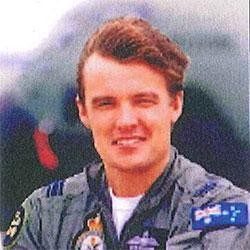
Field: Aviation Safety
Project Title: Human factors awareness and development in the Royal Australian Air Force
Keeping aircrew safe is vital to any successful aviation mission. An officer graduate and former pilot in the Royal Australian Air Force (RAAF) for 13 years, Dr Boyd Falconer is a specialist in the areas of aviation safety, accident investigation, and communication in safety-critical environments. Armed with a science degree in mathematics and an aviation degree, Falconer’s PhD research at UNSW Faculty of Science in the discipline of organisational psychology investigated human performance in high-risk military aviation. The objective of this work was to develop aircraft-specific training programs for RAAF crew members, to educate them about risks and best-practices, and to ultimately improve safety outcomes. In 2000, while working in the UNSW School of Aviation, Falconer was a joint inaugural recipient of the Spitfire Memorial Defence Fellowship. His project was aimed at improving awareness of human performance in ADF aviation, which was – at the time – cited as a contributing factor in roughly 70 per cent of all incidents involving RAAF aircraft. By surveying aircrew, Falconer hoped to get a better sense of how well understood and acknowledged these potentially dangerous human factors were. Through his project, he sought to develop a foundation for a fully integrated “human factors” training program, which could be implemented to reduce the number of human performance errors. Falconer, who has consulted broadly across the aviation industry, and served as an advisor with defence and technology companies, now works at the University of Michigan in the US, where he has held posts as the Director of Development for Aeronautical Engineering and the Centre for Entrepreneurship.